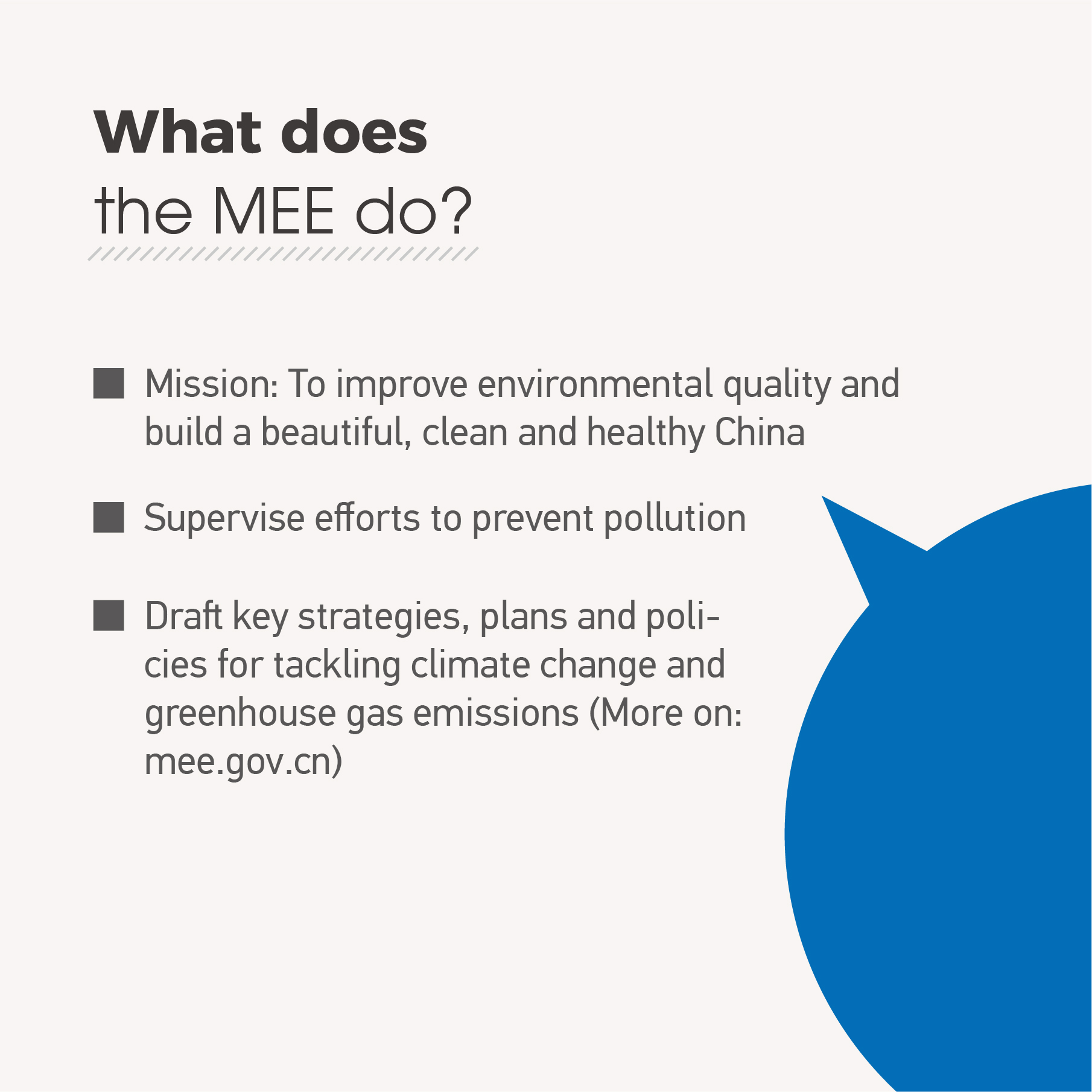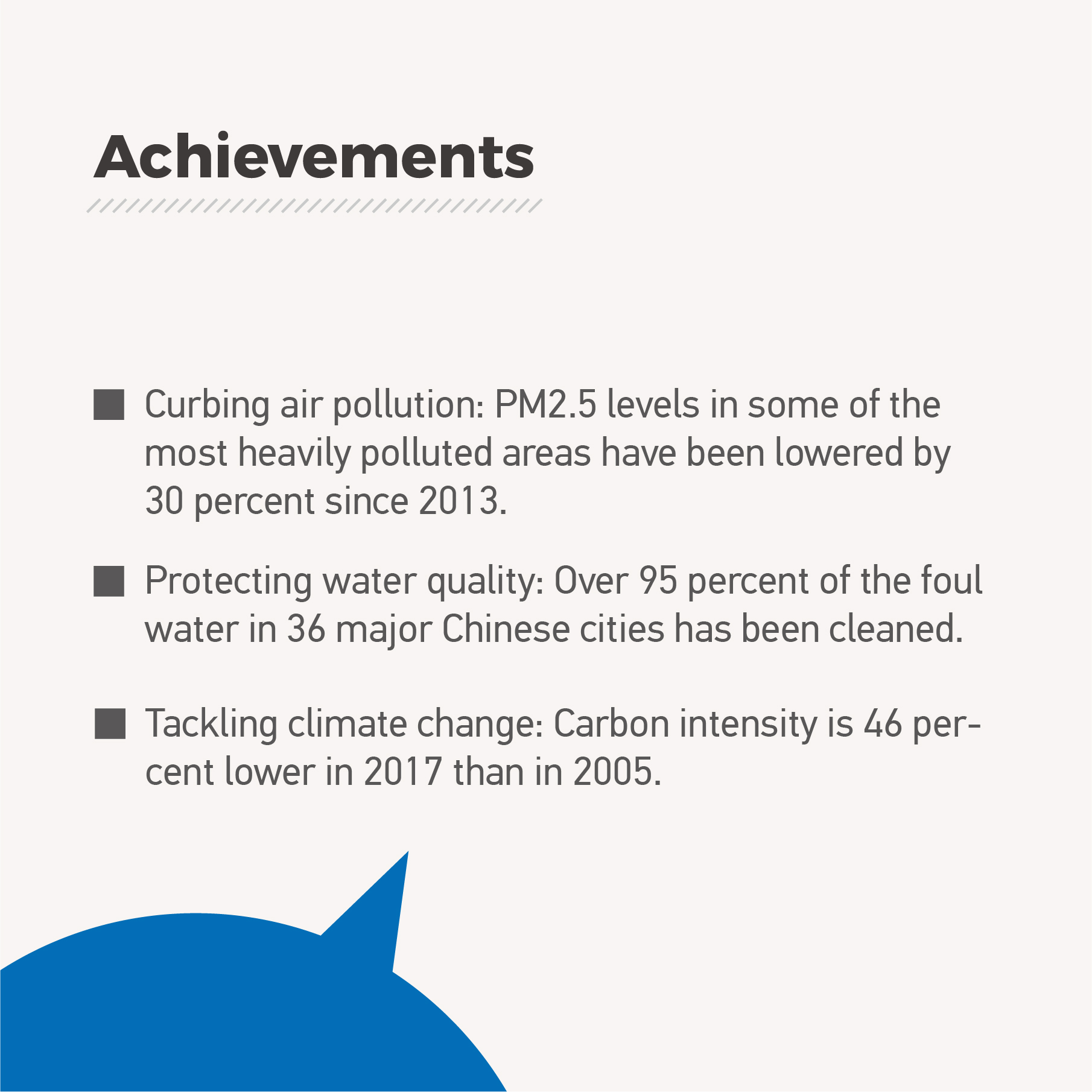04:08

What achievements have China made in tackling pollution? What's the magic behind China's growing vegetation cover? Does Beijing's odd-even license plate system work to curb smog? These are some of the common questions that come to the fore whenever China's environmental issues are discussed.
In this episode of Ask China, a special series focusing on important subjects related to China, CGTN invited Wu Changhua, a policy analyst and adviser on sustainability strategy and innovation, to answer some of the most straightforward questions we have collected from people around the world.
What are China's specific plans to address the environmental issues the country is facing right now and in the future?
"We are in the middle of the 13th Five-Year Plan, and China has set very specific targets about environmental pollution control and prevention in the short-term plan, particularly focusing on air, water and soil," Wu said.
"If you look at the number of days that we call ‘blue sky days' in Beijing, we see obvious progress since 2013," she said.
Wu pointed out that China's air quality has improved during the past few years, and that the national government has made serious commitments to deliver satisfactory air quality levels by the year 2020.
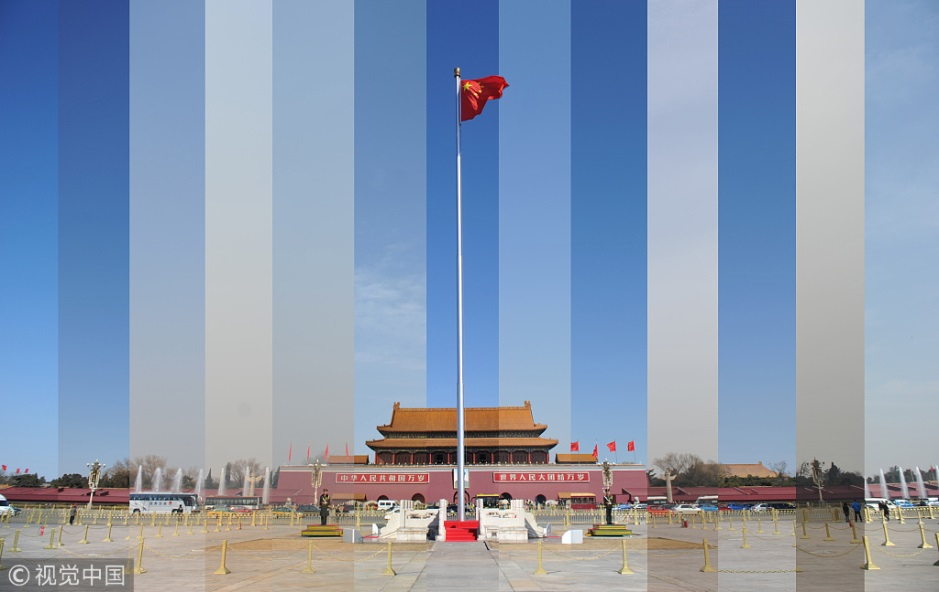
Beijing's air quality has seen improvement since 2013. /VCG Photo
Beijing's air quality has seen improvement since 2013. /VCG Photo
A total of 338 cities enjoyed good air quality for 79.3 percent of the days in 2018, up 1.3 percentage points year-on-year, meeting the air quality target for the year. The average PM 2.5 density (a key indicator of air pollution) in 338 major cities dropped by 9.3 percent year-on-year.
Talking about China's solutions to tackle water pollution, Wu mentioned the "river master" plan.
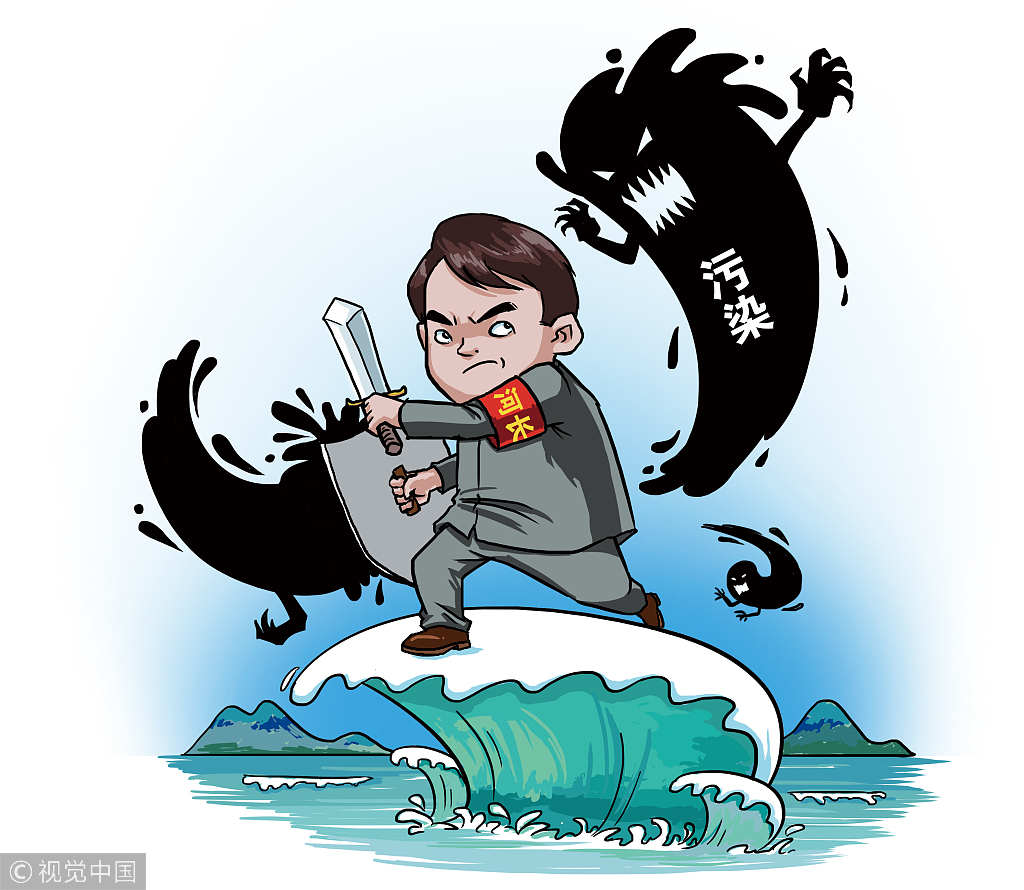
China has made a "river master" plan, appointing a local chief for the protection of every river and lake. /VCG Photo
China has made a "river master" plan, appointing a local chief for the protection of every river and lake. /VCG Photo
"Today in China, you cannot find any lake or river without a chief, someone appointed to protect the local water system," Wu explained. "The idea behind this particular system is accountability. Local decision makers have to pay attention to the ecological foundation, particularly the water quality, before bringing any industries or infrastructure to the region."
What is the magic behind China's growing vegetation cover?
A recent picture shared by NASA shows that China and India contributed a combined 31.8 percent to the total global new leaf area between 2000 and 2017, despite the two countries being often criticized for flouting environmental norms.
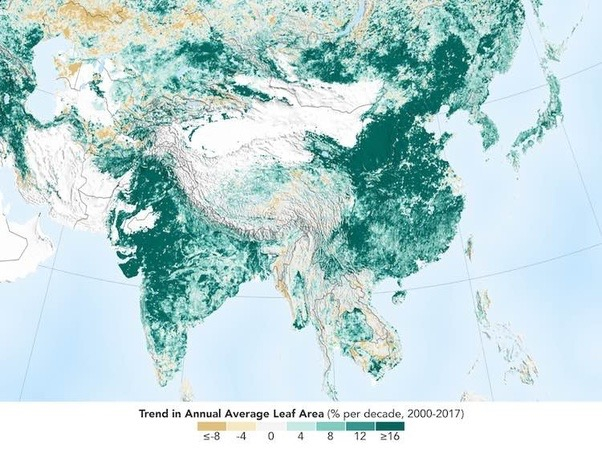
Courtesy: NASA Earth Observatory
Courtesy: NASA Earth Observatory
The question reminded Wu of her childhood when children at school were mobilized to plant trees every March 12, China's national day for tree planting.
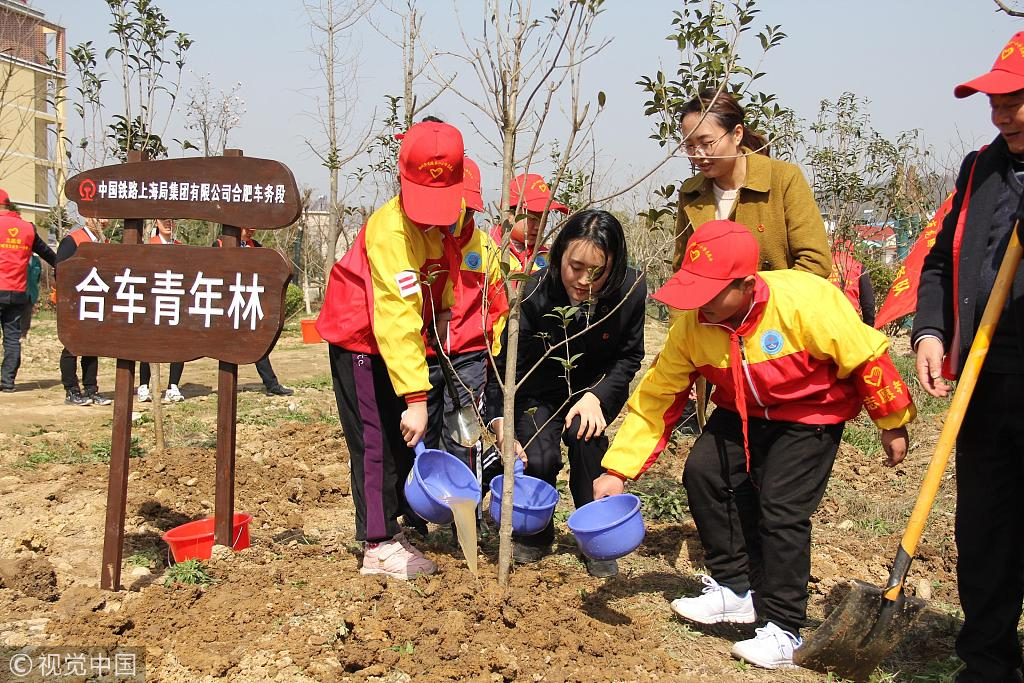
Primary school students plant saplings in Hefei City, east China's Anhui Province, ahead of China's National Tree Planting Day falling on March 12. /VCG Photo
Primary school students plant saplings in Hefei City, east China's Anhui Province, ahead of China's National Tree Planting Day falling on March 12. /VCG Photo
"Every individual is motivated and mobilized to plant trees. Re-planting the land has been part of the society for a long time," she said.
"The outcome we see today from the satellite is a result of decades-long efforts. Globally, we all recognized the contribution of reforestation to solving [the issue of] climate change," Wu added.
Does Beijing's 'odd-even scheme' work to improve air pollution?
"Actually, we take two numbers off the street every day. It contributes tremendously to improve local air quality," Wu said.
"For cities like Beijing, because we do not have many industrial facilities anymore, so locally, vehicle exhaust emissions definitely make up a big portion of air [pollution]," Wu said.
Vehicle exhaust emissions have been identified as a major source of air pollution in China, according to the country's Ministry of Ecology and Environment. Studies of the course of pollution in Beijing, Tianjin, Shanghai and another 12 Chinese cities found that vehicle emissions made up between 13.5 percent and 52.1 percent of the major pollutants.
"For cities like Beijing, because we do not have many industrial facilities anymore, so locally, vehicle exhaust emissions definitely make up a big portion of air [pollution]," Wu said.
Vehicle exhaust emissions have been identified as a major source of air pollution in China, according to the country's Ministry of Ecology and Environment. Studies of the course of pollution in Beijing, Tianjin, Shanghai and another 12 Chinese cities found that vehicle emissions made up between 13.5 percent and 52.1 percent of the major pollutants.
How do you see the approach and role of the government in fighting air pollution in China?
"The government has an absolutely critical role to play in driving air quality improvement," Wu stated. "The reason is that environmental issues are public goods."
Wu further explained that the government has the responsibility of introducing laws, regulations, policies and incentives to support the environmental sector and help create environmental solutions and technologies.
China has met its annual target for pollution control, but challenges still remain, Chinese Ecology and Environment Minister Li Ganjie said last Sunday at the "Ministers' Corridor" during this year's Two Sessions.
In 2013, China issued the Air Pollution Prevention and Control Action Plan, marking China's campaign against air pollution. Since then, PM2.5 levels in some of the most heavily polluted areas have been reduced by 30 percent.
Last year, China approved another three-year action plan aimed at cleaning the nation's air. According to the plan, PM2.5 will drop by more than 18 percent within two years. Meanwhile, cities will enjoy good quality air days for about 80 percent of the year.







